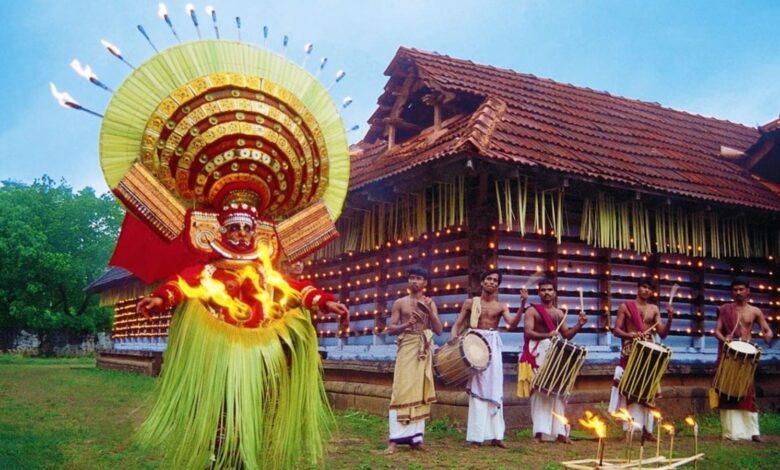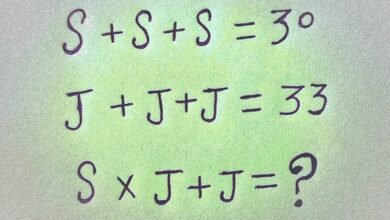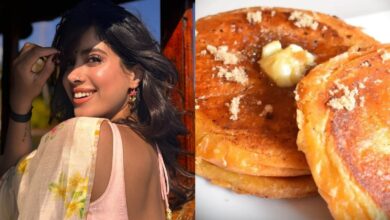Communities of my Country: 3 unmissable festivals of Kerala; take a journey through tradition and devotion

If there’s one state that perfectly encapsulates the soul of India, it’s Kerala – famously known as “God’s Own Country”. Nestled between the Arabian Sea and the Western Ghats, the state offers stunning landscapes, rich heritage, and vibrant festivals that provide a deep dive into the cultural and spiritual heart of the region. While festivals like Pongal, Vishu, and Onam draw crowds every year, there are lesser-known but equally captivating celebrations that showcase the state’s unique traditions. If you’re someone who loves exploring diverse cultures and festivities, here are three Kerala festivals you absolutely cannot miss. Theyyam Thrissur Pooram: The festival of festivalsOften referred to as the “Festival of Festivals,” Thrissur Pooram is an awe-inspiring spectacle that defines Kerala’s cultural richness. Held annually at the Vadakkunnathan Temple in Thrissur, this grand celebration attracts thousands of visitors from all corners of the world. It is not just a temple festival; it’s a dazzling display of tradition, spirituality, and community spirit. The festival kicks off with a grand procession of decorated elephants, each draped in colourful cloth and bearing beautifully crafted umbrellas. As they march through the streets, the thunderous beats of the Chenda Melam (a traditional drum ensemble) and Pancha Vadyam (a five-instrument performance) fill the air. The centrepiece of Thrissur Pooram is the Vedikkettu or the fireworks display — an extraordinary pyrotechnic show that lights up the sky and adds to the festival’s grandiose atmosphere. Thrissur Pooram is celebrated during the Malayalam month of Medam, on the day when the Pooram star aligns with the moon. A festival that celebrates unity and harmony with people from all walks of life, regardless of religion, coming together to take part in this vibrant celebration, it’s an experience that immerses you in the very essence of Kerala’s cultural heritage. Thiruvathira: A woman-centric celebrationFor centuries, Kerala has celebrated the sacred festival of Thiruvathira; it is a day dedicated to the cosmic dance of Lord Shiva and his divine consort, Goddess Parvati. While Thiruvathira is an important spiritual observance for Hindus, it holds a unique place in the hearts of Malayali women. Celebrated every year in the month of Dhanu Maasam (December-January), the festival symbolises the unity between Lord Shiva and Goddess Parvati, signifying the ultimate partnership and harmony. Thiruvathira On the day of Thiruvathira, women gather early in the morning to bathe in communal ponds, dress in their finest saris, adorn themselves with jasmine garlands, and head to Shiva temples to offer prayers. The day is filled with rituals, feasts, and joyous celebrations, with Kaikottikali, a traditional group dance, being one of the highlights. Women form circles around a Nilavilakku (an auspicious lamp) placed at the centre of a flower rangoli and sing songs in praise of Lord Shiva and Goddess Parvati. The dance is spontaneous, fun, and inclusive, with everyone joining in regardless of skill or experience. The celebration also includes the preparation of special dishes such as Puzhukku (a spicy mix of tuber vegetables) and Koova Payasam (a sweet dessert made from arrowroot and jaggery). It’s a day that honours both the spiritual and social significance of women in Kerala’s culture. Theyyam: A divine ritual performanceOne of the most mesmerising and ancient festival traditions of Kerala is Theyyam — a powerful fusion of dance, music, and devotion that dates back to pre-Hindu times. Unlike most festivals, Theyyam is not just a celebration; it is a spiritual ritual performed in the northern dricts of Kerala, especially in temples and family estates. It is one of the most extraordinary expressions of folk art, combining devotion with theatrical performance. The central aspect of Theyyam is the elaborate transformation of the performer into a divine being. Predominantly performed men from marginalised communities, Theyyam arts don ornate costumes, intricate face paint, and towering headgear, often reaching up to 50 feet. Each Theyyam performance is a representation of a deity or mythological character, including gods, goddesses, demons, and heroes. The performers enter a trance-like state, embodying the divine presence they represent. The performances are a blend of dance, music, and ritualic chants, and sometimes feature daring acts like fire-walking or walking over burning embers. The rhythm of the Chenda (drum), Elathalam (cymbals), and other traditional instruments enhances the mysticism of the performance. The ritualic performances often involve prophecy, healing and fortune-telling, adding to the aura of mystery and reverence surrounding this ancient tradition. These festivals give you a chance to witness the blend of faith, art, and community spirit that makes Kerala unique. Your interest in experiencing these cultural performances is exemplified in the My Country My Lens contest, which celebrates 100 years of Hindustan Times through a 100-day photography challenge. If you’re a budding photographer or someone who’s been doing this for years, get the chance to feature your picture in Hindustan Times! For more information, click here.






